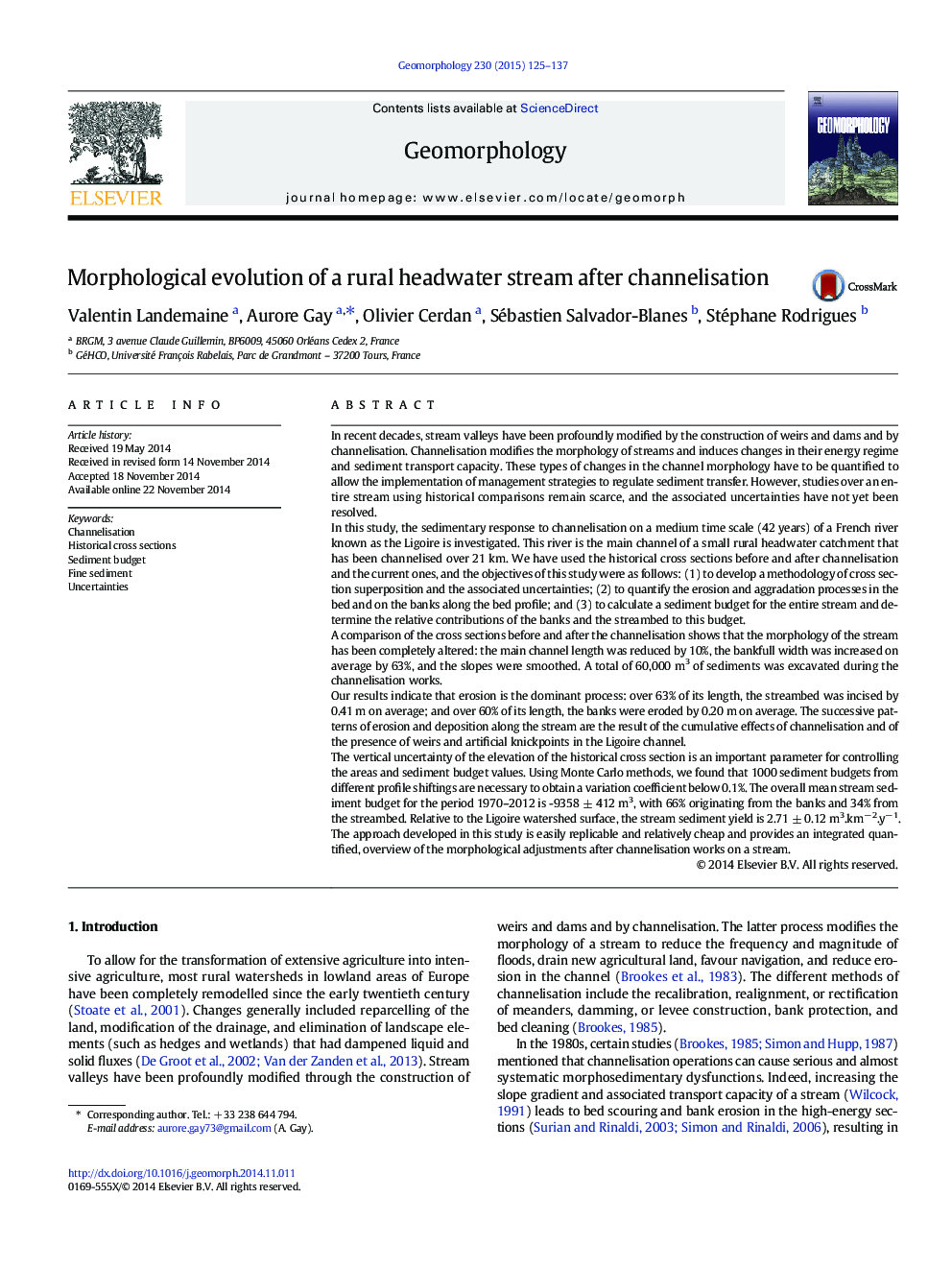| کد مقاله | کد نشریه | سال انتشار | مقاله انگلیسی | نسخه تمام متن |
|---|---|---|---|---|
| 4684271 | 1635419 | 2015 | 13 صفحه PDF | دانلود رایگان |
• We develop a method to compare cross sections and quantify the uncertainties.
• 60,000 m3 of sediment were excavated during the channelization works in 1970.
• 19,500 m3 of sediment were eroded and 9400 m3 were exported since channelization.
• The channel contribution in the sediment budget is of 2.71 ± 0.12 m3.km− 2.yr− 1.
• 66% of the sediment exported comes from the banks and 34% from the streambed.
In recent decades, stream valleys have been profoundly modified by the construction of weirs and dams and by channelisation. Channelisation modifies the morphology of streams and induces changes in their energy regime and sediment transport capacity. These types of changes in the channel morphology have to be quantified to allow the implementation of management strategies to regulate sediment transfer. However, studies over an entire stream using historical comparisons remain scarce, and the associated uncertainties have not yet been resolved.In this study, the sedimentary response to channelisation on a medium time scale (42 years) of a French river known as the Ligoire is investigated. This river is the main channel of a small rural headwater catchment that has been channelised over 21 km. We have used the historical cross sections before and after channelisation and the current ones, and the objectives of this study were as follows: (1) to develop a methodology of cross section superposition and the associated uncertainties; (2) to quantify the erosion and aggradation processes in the bed and on the banks along the bed profile; and (3) to calculate a sediment budget for the entire stream and determine the relative contributions of the banks and the streambed to this budget.A comparison of the cross sections before and after the channelisation shows that the morphology of the stream has been completely altered: the main channel length was reduced by 10%, the bankfull width was increased on average by 63%, and the slopes were smoothed. A total of 60,000 m3 of sediments was excavated during the channelisation works.Our results indicate that erosion is the dominant process: over 63% of its length, the streambed was incised by 0.41 m on average; and over 60% of its length, the banks were eroded by 0.20 m on average. The successive patterns of erosion and deposition along the stream are the result of the cumulative effects of channelisation and of the presence of weirs and artificial knickpoints in the Ligoire channel.The vertical uncertainty of the elevation of the historical cross section is an important parameter for controlling the areas and sediment budget values. Using Monte Carlo methods, we found that 1000 sediment budgets from different profile shiftings are necessary to obtain a variation coefficient below 0.1%. The overall mean stream sediment budget for the period 1970–2012 is -9358 ± 412 m3, with 66% originating from the banks and 34% from the streambed. Relative to the Ligoire watershed surface, the stream sediment yield is 2.71 ± 0.12 m3.km− 2.y− 1.The approach developed in this study is easily replicable and relatively cheap and provides an integrated quantified, overview of the morphological adjustments after channelisation works on a stream.
Journal: Geomorphology - Volume 230, 1 February 2015, Pages 125–137
